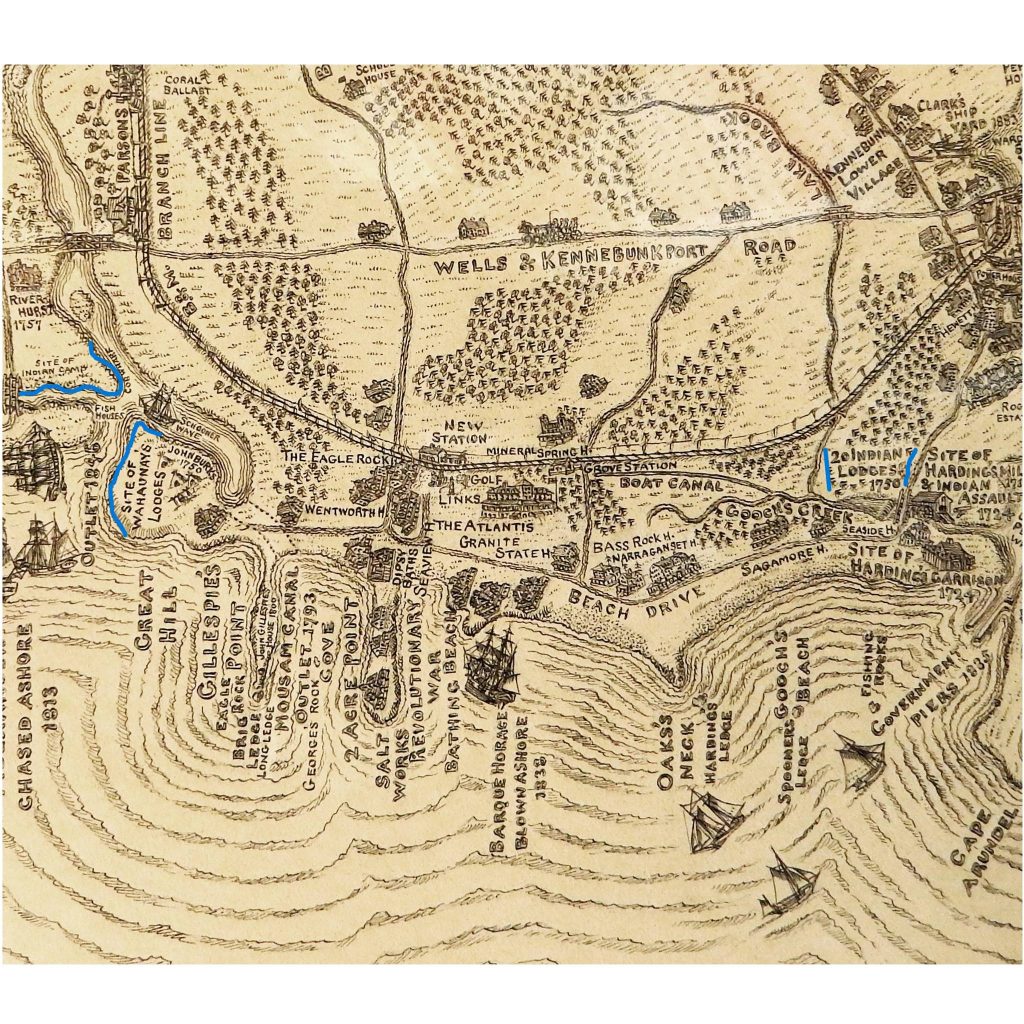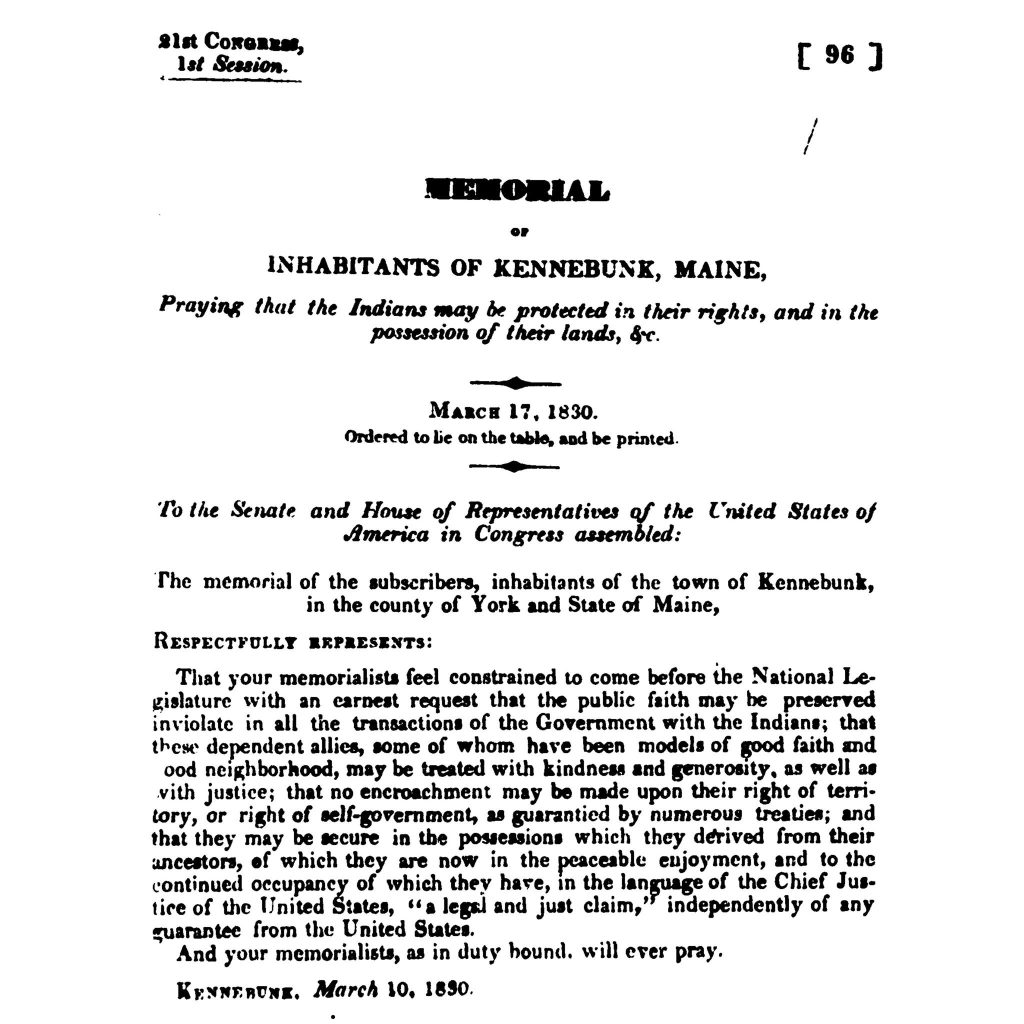Kennebunk Opposed Indian Removal Act
The history of the Kennebunks has its own shameful episodes of treaty breaking in the build up to King William’s and The French & Indian Wars when Indigenous families still camped along the Cape Porpoise (Mousam) and Kennebunk Rivers. But no Indigenous families had lived in the Kennebunks for 48 years in 1803 when Thomas Jefferson first proposed the concept of southern Indian Removal. He thought Choctaw, Cherokee and Creek tribes should trade their cultivated farms and orchards east of the Mississippi River for uncleared wilderness lots on his new Louisiana Purchase. In fact, he hoped to finance the Louisiana Purchase from proceeds of the sale of cultivated Indigenous land. When The Louisiana Purchase was ratified, it did not incorporate Jefferson’s plan for “Indian Removal.”
President James Monroe proposed the idea to Congress again in 1825 but it didn’t have broad support until Andrew Jackson became President in 1829. At his first possible Presidential opportunity Jackson spoke to Congress making clear his support for “Indian Removal” to “preserve the endangered Indian culture.” The Cherokee Nation was actively practicing their own culture by anyone’s standards in 1829. They had a constitution and a newspaper, The Cherokee Phoenix, in which every column was printed in English and in Cherokee. They also had fertile, gold rich land that Jackson thought should belong to the government.
The town of Kennebunk responded to President Jackson’s support of Indian Removal with a memorial to the United States Congress praying that the Indians be protected in their rights, and in the possession of their lands. See 3rd picture for a transcript of Kennebunk’s Memorial.
The Indian Removal Act passed in both houses of Congress by a narrow margin. President Jackson signed the bill into law. The Indian Removal Act was the first shameful step on the “Trail of Tears.” The forcible eviction of Native Americans living east of the Mississippi began in 1838.





Leave a Reply